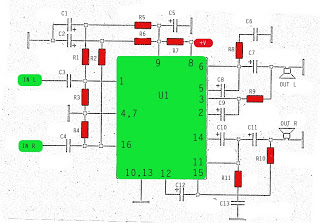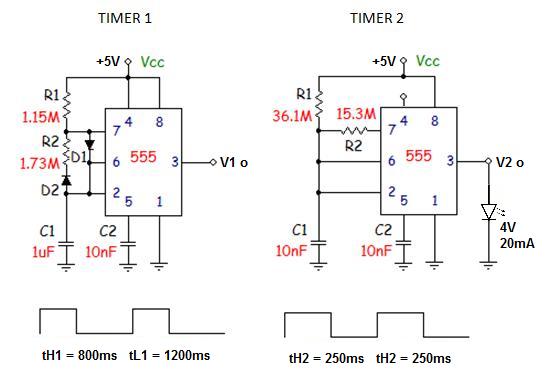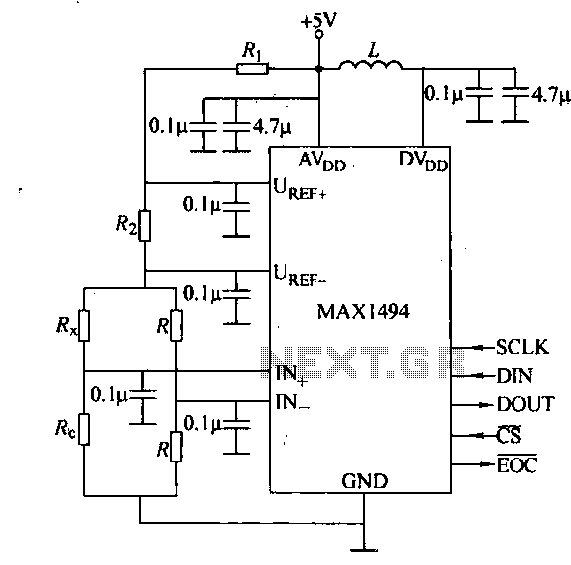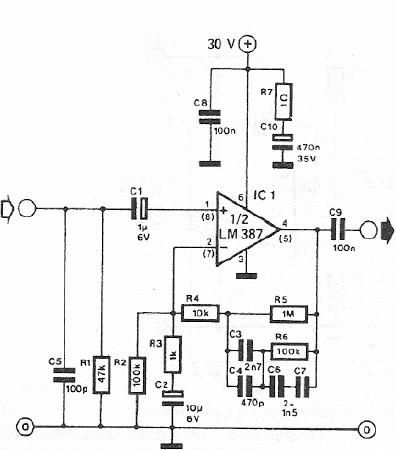
stereo stk013 audio amplifier circuit

The amplifier circuit utilizes the STK integrated circuit, similar to a previous design. This circuit features two inputs and two outputs, commonly known as a stereo amplifier. It is a power amplifier rated at 2 x 18 Watts with an impedance of 8 ohms. It is important to note that the circuit requires a supply voltage of approximately 35-38 Volts.
The stereo amplifier circuit based on the STK integrated circuit is designed to provide high-quality audio amplification with a power output of 18 Watts per channel. The circuit configuration typically includes a power supply section, input stage, amplification stage, and output stage, ensuring optimal performance for audio applications.
The power supply section must deliver a stable DC voltage in the range of 35-38 Volts, which is crucial for the proper operation of the STK IC. This voltage range allows the amplifier to achieve its rated output power while maintaining linearity and minimizing distortion.
The input stage of the amplifier circuit usually consists of capacitive coupling to block any DC offset from the audio sources. This stage may include resistive and capacitive components to set the gain and frequency response, ensuring that the audio signal is properly conditioned before amplification.
The amplification stage employs the STK IC, which integrates multiple transistors and other components to provide the necessary gain and drive capability. The IC is designed to handle high-frequency signals effectively, making it suitable for a wide range of audio applications. Proper heat dissipation must be considered, as the amplifier can generate significant heat during operation. A heatsink is often attached to the IC to maintain optimal operating temperatures.
The output stage connects the amplifier to the speakers, with an impedance matching network ensuring that the 8-ohm load is appropriately driven. Output protection mechanisms, such as fuses or thermal shutdown features, may be incorporated to protect the circuit from overload conditions.
In summary, this stereo amplifier circuit utilizing the STK IC is engineered for high fidelity and reliable performance, making it suitable for various audio applications. The design emphasizes power handling, thermal management, and signal integrity to deliver an exceptional listening experience.On the amplifier circuit using ic STK, the same as my previous posting. However, in the above circuit has 2 inputs and 2 outputs, or commonly called a stereo amplifier. This issue of power amplifier 2 x 18Watt and has impedance 8. To stress that it takes about 35-38Volt. 🔗 External reference
The stereo amplifier circuit based on the STK integrated circuit is designed to provide high-quality audio amplification with a power output of 18 Watts per channel. The circuit configuration typically includes a power supply section, input stage, amplification stage, and output stage, ensuring optimal performance for audio applications.
The power supply section must deliver a stable DC voltage in the range of 35-38 Volts, which is crucial for the proper operation of the STK IC. This voltage range allows the amplifier to achieve its rated output power while maintaining linearity and minimizing distortion.
The input stage of the amplifier circuit usually consists of capacitive coupling to block any DC offset from the audio sources. This stage may include resistive and capacitive components to set the gain and frequency response, ensuring that the audio signal is properly conditioned before amplification.
The amplification stage employs the STK IC, which integrates multiple transistors and other components to provide the necessary gain and drive capability. The IC is designed to handle high-frequency signals effectively, making it suitable for a wide range of audio applications. Proper heat dissipation must be considered, as the amplifier can generate significant heat during operation. A heatsink is often attached to the IC to maintain optimal operating temperatures.
The output stage connects the amplifier to the speakers, with an impedance matching network ensuring that the 8-ohm load is appropriately driven. Output protection mechanisms, such as fuses or thermal shutdown features, may be incorporated to protect the circuit from overload conditions.
In summary, this stereo amplifier circuit utilizing the STK IC is engineered for high fidelity and reliable performance, making it suitable for various audio applications. The design emphasizes power handling, thermal management, and signal integrity to deliver an exceptional listening experience.On the amplifier circuit using ic STK, the same as my previous posting. However, in the above circuit has 2 inputs and 2 outputs, or commonly called a stereo amplifier. This issue of power amplifier 2 x 18Watt and has impedance 8. To stress that it takes about 35-38Volt. 🔗 External reference





